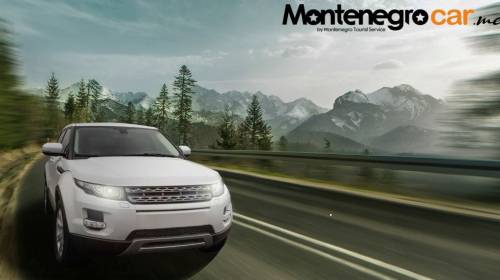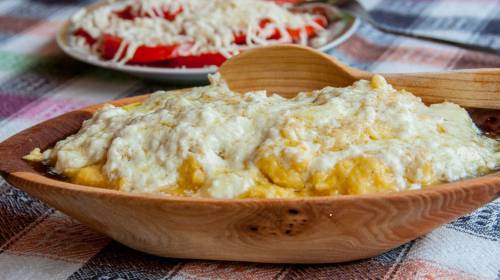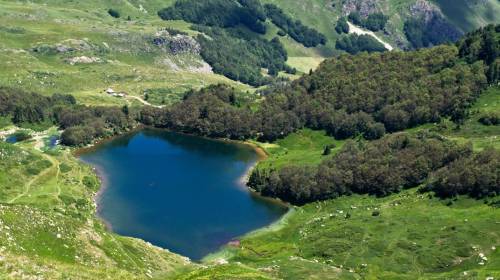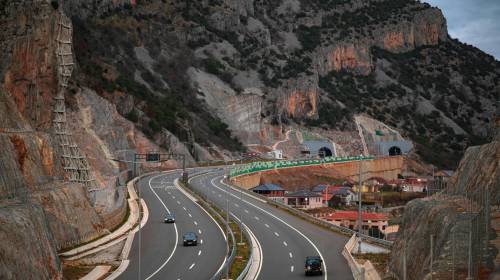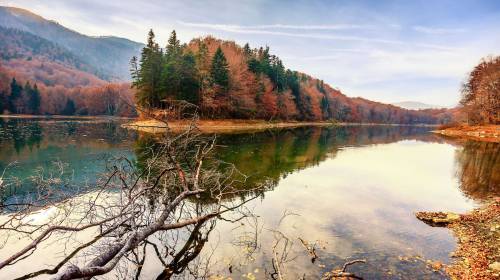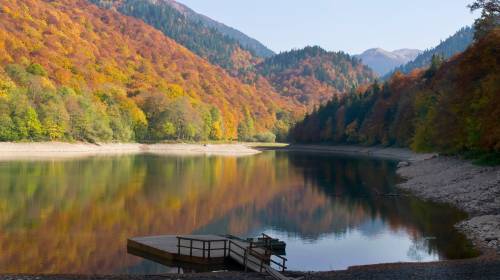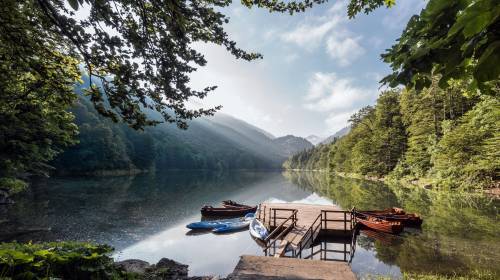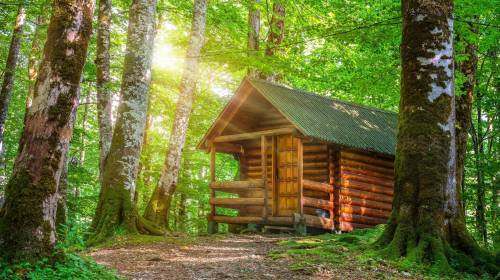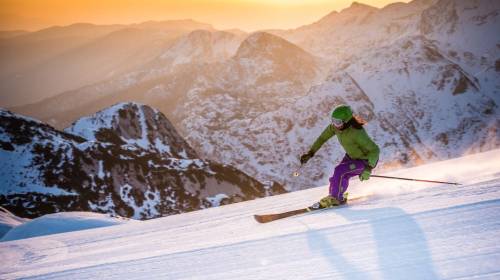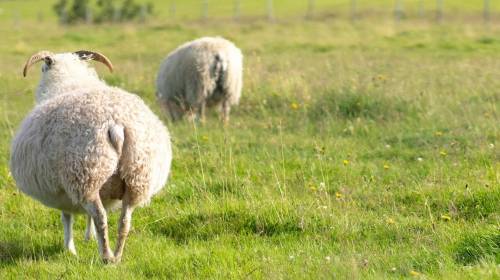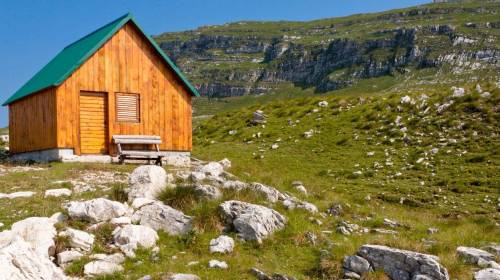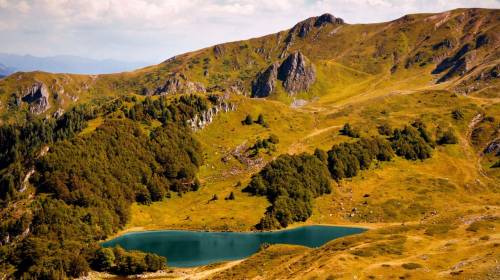Bjelasica Mountain – Explore Montenegro’s Wild Side on Four Wheels
Discover Bjelasica with a detailed driving guide covering best routes, key attractions, seasonal tips, and practical advice for a safe, flexible road trip.
If you didn’t know, Bjelasica is a mountain that offers one of the most complete mountain journeys in Montenegro, especially for drivers who like to explore fascinating landscapes at their own pace. Located in the very heart of the country and rising to 2,139 meters, Bjelasica combines impressive slopes, dense centuries-old forests, and as many as six natural lakes that leave no visitor indifferent. This diversity makes it a perfect choice for everyone wishing to combine a drive through remarkable scenery with a stay in untouched nature.
Unlike other mountain ranges in different parts of Montenegro, Bjelasica has noticeably softer contours and more accessible terrain, which makes it a popular destination throughout the year. The routes you will follow connect peaceful natural lakes, traditional katuns, and mountain villages with Kolašin, the largest and most visited town in this part of Montenegro, considered the true “gateway” to the world of unspoiled nature. For travelers searching for things to do in Montenegro, a drive across Bjelasica combines striking landscapes with authentic mountain villages.
For all these reasons—and many more—we created this guide, which will be of great help when you set out on your journey to this unique mountain range. In the following sections you will discover the must-visit destinations, the best routes to reach them, and several practical tips that will significantly enhance the quality of your adventure. So let’s begin…
Getting to Bjelasica – Routes and Road Conditions
Thanks to its central location, Bjelasica can be reached from several directions, with the most common starting points being Podgorica, the northern towns of Montenegro, and a number of coastal destinations. The quality of the roads varies between modern highways, the older Morača Canyon route, and mountain gravel tracks, so careful planning and checking weather conditions are key factors before setting out.
From Podgorica via Kolašin
The fastest and most direct way to reach Bjelasica begins in Podgorica. The classic road runs through the impressive Morača Canyon, famous for more than thirty tunnels and numerous sharp bends, offering spectacular views but demanding very attentive driving. A practical and increasingly popular alternative is the Princess Xenija highway, which significantly shortens the trip and makes it much safer.
Whichever route you choose, both lead to Kolašin, from where you can explore Bjelasica in depth—from the town itself and nearby ski resorts to the heart of Biogradska Gora National Park.
Tip: If you start your journey in the capital, it is wise to rent a car in Podgorica (for example through a local agency such as Montenegro Car). If possible, choose a vehicle with four-wheel drive to reach the more remote corners of Bjelasica that are difficult to access with a standard car.
From the Montenegrin Coast
Coming to Bjelasica from the coast involves crossing Montenegro’s central mountain regions. Travelers setting off from Budva, Bar, or Kotor first head toward Podgorica, most often via Cetinje—either over Mount Lovćen or the Budva route, both equally scenic. After reaching Podgorica, continue north through the Morača Canyon or along the newer highway to Kolašin.
Whichever option you take, expect a drive of about two to three hours, which is not long considering that in a single day you climb from sea level to over 2,000 meters.
There is also a less frequented but visually striking route starting in Herceg Novi and leading through Nikšić and Podgorica to Kolašin. This drive lasts around three hours and twenty minutes and takes you from the Bay of Kotor across Grahovo to Nikšić, providing some of Montenegro’s most attractive mountain scenery.
Arriving from Northern Montenegro
If your trip to Bjelasica begins in northern Montenegro, travel time will be noticeably shorter, and you will have the chance to see some of the country’s most beautiful areas that visitors often overlook.
The drive from popular northern towns such as Berane, Žabljak, or Bijelo Polje takes between forty-five minutes and an hour and a half. Road quality is generally good, and another advantage is the almost complete absence of heavy traffic.
Driving Tips and the Best Seasons
As mentioned earlier, planning is essential for a safe and smooth drive to Bjelasica at any time of year. Road conditions change with altitude and weather, so it helps to know what to expect. Here are several key pointers:
- Road conditions – Lower sections of Bjelasica are paved, while higher areas often include gravel or dirt tracks, especially toward lakes and remote katuns.
- Type of vehicle – A 4x4 is recommended during rainy or snowy periods and remains useful even in summer because of steep climbs and distant attractions.
- Fuel – Fuel stations are widespread in Montenegro, but refuel in your starting city to avoid any risk of running low.
- Navigation – Offline GPS or a printed map are valuable, since mobile signal often disappears on higher stretches of Bjelasica.
- Best season – In summer roads are dry and easy to pass; in winter snow and ice can make driving difficult, while autumn offers mild temperatures and very little traffic.
Kolašin – The “Gateway” to Bjelasica
If you are heading on your journey toward Bjelasica, Kolašin is an unavoidable destination. This town lies in the north of Montenegro, surrounded by the Bjelasica mountain and the Morača Valley, and therefore naturally serves as the main base for various types of excursions in the area. In the town itself you can find quality accommodation, authentic food (we recommend kačamak and cicvara), rent-a-car options, as well as other practical services that will enhance your adventure on Bjelasica.
Where to Stay in Kolašin
- Family houses and apartments – Definitely our recommendation. If you want a truly authentic experience, we suggest staying in small guesthouses and private homes. They are affordable, the hosts will give you a warm welcome, and, most importantly, you can find this type of lodging both in Kolašin and on Bjelasica itself.
- Modern hotels – A frequent choice for those who prefer comfort and a certain level of luxury. Most are in the center of Kolašin and usually offer spa centers, gyms, restaurants, and many modern facilities.
- Ski-in/ski-out options – Hotels and mountain lodges near the Bjelasica 1450 and Bjelasica 1600 ski centers (often called Kolašin 1450 and Kolašin 1600 by tourists). These accommodations are ideal for winter visits, allowing you to stay right next to the ski slopes. They are high quality and provide an idyllic yet distinctive ski experience.
- Rural cottages and eco-lodges – A very common choice during summer, when travelers often select wooden cabins or eco-houses in villages such as Jelovica, where hiking trails leading through the mountain are practically on the doorstep.
- For camping enthusiasts – Biogradska Gora National Park offers some of the most beautiful camping spots in Europe. Be sure to stay in designated camping zones and consider the season, as certain wildlife can pose risks during summer if you camp in the wilderness.
Practical Services in Kolašin
- Food and supplies – Supermarkets, bakeries, pharmacies, and small shops are found almost everywhere, while the health center is located in the very center of town.
- Banking and rentals – Banks and ATMs are also in the center, as are agencies where you can rent a car in Kolašin, as well as hiking or ski equipment if visiting in winter.
- Tourist information – Information desks are located both in the town and in some parts of Bjelasica itself. They are very useful for practical tips and suggestions on how to explore the mountain.
Places on Bjelasica Easily Reached by Car
We now come to perhaps the most engaging part of this guide—the main attractions, that is, the places on this mountain you really should visit. For travelers creating their list of things to do in Montenegro, these stops on Bjelasica deserve a prime spot. As mentioned earlier, driving across Bjelasica gives access to numerous lakes, ski centers, and peaceful, traditional mountain villages and katuns.
Well-paved roads lead to the key points of interest, while gravel tracks take you farther into areas where the traditional way of life is still preserved. Below are several of the most interesting locations you can visit by car.
Biogradska Gora National Park
- This national park—often called a natural wonder—protects one of the oldest primeval forests in Europe and lies in the very heart of Bjelasica. The entrance is less than a thirty-minute drive from Kolašin or Mojkovac.
- Biogradsko Lake, at 1,094 m above sea level, is the park’s highlight. A 3.5 km circular trail surrounds the lake, well maintained and suitable for all ages. To enrich the experience, you can rent a boat or kayak on the lake or sample local specialties in the small restaurant by the shore.
- Parking is free, but consider your timing. In the busy summer months, it’s best to arrive early to secure a good spot.
Note: Entrance to Biogradska Gora National Park costs €4, with possible discounts for students and pensioners, while local residents can enter free of charge.
Ski Centers Bjelasica 1450 and Bjelasica 1600 (Kolašin 1450 and Kolašin 1600)
- Known for abundant winter snowfall, these modern ski centers on Bjelasica offer all necessary, up-to-date facilities for visitors.
- Bjelasica 1450 features a variety of slopes of different difficulty levels, while the higher Kolašin 1600 provides longer descents and generally more stable snow conditions.
- In summer, both centers open for hiking, mountain biking, and scenic chairlift rides. Hotels and mountain lodges lie nearby, along with small shops for supplies, gear rental, and souvenirs.
Katuns and Remote Villages
Beyond the main tourist spots, Bjelasica hides katuns and small villages that are reached by gravel roads, often requiring a 4x4 vehicle, and are well worth adding to your itinerary. Notable examples include:
- Katun Vranjak, probably the best-known katun on Bjelasica, where visitors encounter centuries-old natural surroundings, the traditional way of life, and authentic dishes such as kačamak and cicvara. Hiking trails from here lead toward the Zekova Glava peak and Pešića Lake.
- Ursulovačko Lake, lying beneath Crna Glava, offers silence and panoramic views but demands extra caution because of narrow and poorly marked paths. It is wise to consult locals before setting out to ensure you have all necessary details.
Seasonal Driving Guide for Bjelasica
As you might expect, driving through Bjelasica looks completely different in summer and winter months. Road quality, the equipment you need, and the accessibility of mountain trails depend on the time of year and the current weather conditions. That is why it is essential to carefully plan the routes you will take and to find out in advance what equipment is required if you travel in winter periods (late autumn and early spring are also unpredictable and often require special gear).
Summer Driving (June–September)
- During summer the roads on Bjelasica are mostly dry and passable. The asphalt roads from Podgorica toward Kolašin and Mojkovac remain in good condition, while the gravel tracks in the higher zones are “manageable.”
- A standard car is often sufficient, but a vehicle with four-wheel drive gives greater freedom when entering remote mountain trails, so we recommend using one if possible.
- The average temperature of around 17 °C at higher altitudes makes for a pleasant drive, while Biogradsko Lake, Katun Vranjak, and the Zekova Glava peak are all easily accessible.
- Summer tips: Fill your tank in time, bring enough water and a light meal, since in the remote (higher) parts of Bjelasica there are no shops. Also drive carefully because livestock on the roads is not uncommon, and be sure to prepare an offline map.
Winter Driving (December–March)
- In winter Bjelasica becomes a snow-covered mountain that requires more serious preparation. The roads to the Kolašin 1450 and 1600 ski centers are regularly cleared, but higher mountain routes can be closed or difficult to pass.
- Winter tires, snow chains, and preferably a 4x4 vehicle are mandatory to avoid problems with skidding.
- Snow and ice cover both asphalt and gravel sections, while fog or blizzards can quickly reduce visibility. It is recommended to avoid unmarked trails and to check the weather forecast and road conditions before setting off.
Recommended Routes for Exploring Bjelasica
The way you choose to explore Bjelasica depends on how much time you have and, above all, on your personal interests. Some travelers want to see only the key attractions during a one-day trip, while others plan a longer stay to visit lakes, peaks, and traditional katuns. For that reason, we have created several options—short plans that cover both single-day excursions and multi-day journeys. These itineraries can easily become part of a wider plan of places to see in Montenegro, linking mountain landscapes with cultural and coastal stops.
One-Day Trip from the Coast
- The drive from Podgorica to Kolašin takes about an hour and a half through the Morača Canyon or roughly fifty minutes via the new highway—the choice is yours, and both routes offer spectacular scenery.
- From Kolašin it is easy to reach Biogradska Gora National Park, where a 3.5 km walking trail around Biogradsko Lake provides a perfect short mountain experience. With regular stops and rest breaks, you can complete the loop in about an hour to an hour and a half.
- Lunch at Katun Vranjak, with dishes like kačamak and cicvara, will add a traditional flavor to your trip. Afterward, you can return to the coast and arrive by evening.
Weekend in the Mountains
- A two- or three-day stay gives you enough time to explore the highest peaks of Bjelasica and several lakes.
- The first day can be dedicated to Biogradsko Lake and easy hiking trails leading to nearby katuns, while the second day can focus on climbing Zekova Glava (2,117 m) or visiting Pešića Lake.
- Evenings are best spent in mountain lodges or traditional restaurants in Kolašin, where the calm atmosphere and local cuisine complete the experience.
Seven-Day Mountain Adventure
- A full week allows for an in-depth exploration of Bjelasica, including trails that connect Crna Glava (2,139 m), Troglava, and lakes such as Ursulovačko and Šiško.
- Drivers with a 4x4 vehicle can follow off-road routes linking Kolašin, Mojkovac, and Berane, passing through remote katuns and high plateaus.
- Accommodation can be combined between forest bungalows, katuns, and hotels, providing a unique balance of comfort and immersion in nature, with extra activities like skiing in winter or camping if you visit in summer.
Practical Information for Your Bjelasica Trip
We now come to the practical advice, many of which will certainly be useful. In addition to everything already mentioned—routes, fuel stations, road conditions—it is very important to keep the following in mind:
- Check the working hours of katuns and restaurants. Many mountain facilities operate seasonally and close with the start of autumn.
- Learn about local parking and camping rules. In Biogradska Gora National Park, camping is allowed only in designated places.
- Bring cash. Some katuns and small villages do not accept card payments.
- Follow local mountain weather forecasts, not just those for Kolašin or Podgorica. Weather on Bjelasica often differs greatly from lower areas, even from Kolašin itself.
- Ask about village events or fairs. A spontaneous visit to such happenings can enrich your journey, especially in summer.
- Carry sun and insect protection. At higher altitudes the sun is stronger, and near water or in forests mosquitoes and other insects are common.
- Watch for livestock and wildlife signs. On some stretches you may encounter cows, horses, or wild animals moving freely.
All That’s Left Is to Set Off
Now that you know which way to go, what to pack, and how to arrange your journey, Bjelasica stops being just another abstract point on a map and becomes a destination you will gladly return to after your first visit. The road to its lakes, katuns, and peaks requires some preparation, but that very effort is part of what makes this trip worthwhile. It gives you the freedom to set your own pace, choose your detours, and discover hidden corners often absent from tourist guides.
In the end, the essence of this mountain is not in a single peak or trail, but in the blend of driving, immersion in nature, and short pauses that you will remember with pleasure. Bjelasica may welcome you with fog or with flashes of mountain sunlight, but in either case it offers a unique, unrepeatable experience. All that remains is to secure a suitable vehicle and begin your adventure.
Frequently Asked Questions
What are the best hiking trails on Bjelasica Mountain?
Marked trails connect major peaks, meadows, and glacial lakes such as Pešića and Ursulovačko. Hikes range from easy circuits around Biogradsko Lake to full-day ascents of Crna Glava, Bjelasica’s highest summit at 2,139 m.
Where can one find accommodation near Bjelasica for a multi-day visit?
Most visitors stay in Kolašin, which offers hotels, guesthouses, and ski-resort lodges. For closer contact with nature, mountain huts and eco-lodges are available inside or near Biogradska Gora National Park.
What is the ideal time of year to visit Bjelasica for outdoor activities?
June to September brings clear trails and easy lake access, perfect for hiking and scenic drives. From December to March, reliable snow makes the Kolašin ski centers ideal for winter sports.
Is a four-wheel-drive vehicle necessary for Bjelasica?
No, but it is recommended. You can reach Kolašin and Biogradsko Lake with a standard car. However, a 4x4 is advisable for gravel roads leading to higher-altitude lakes, katuns, and mountain peaks. If you don’t own such a vehicle, you can rent one at very reasonable prices in Podgorica, at Podgorica airport, or Tivat airport, as well as in other major Montenegrin cities (prices start at around €15 per day).
What types of wildlife can be spotted in Bjelasica National Park?
Biogradska Gora shelters deer, bears, wolves, and many bird species. Dense beech and pine forests also create habitats for rare insects and smaller mammals.
How does one get to Bjelasica Mountain using public transportation?
Podgorica Airport is about 70 km away. From there, trains and buses run to Kolašin, which functions as the main access point to Bjelasica and Biogradska Gora National Park.
